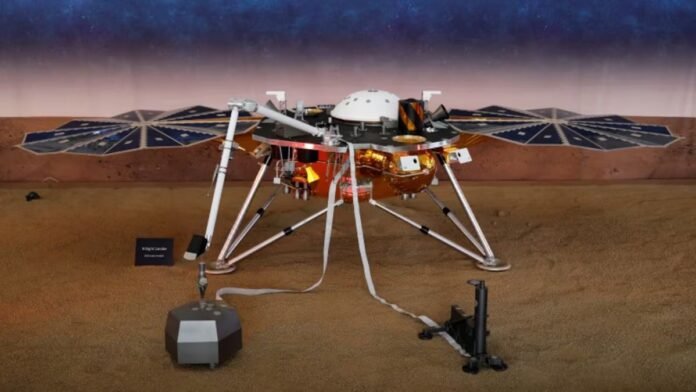symbolic photo
Perth: Scientists have achieved the biggest success in history on Mars. Scientists have discovered the water on Mars that they had been searching for for hundreds of years. After this big discovery by scientists, the possibility of life on Mars has increased. Just as water is present everywhere on Earth. About 70 percent of the Earth’s surface is covered with water. Water is present in the air, on the surface, and inside rocks. Geological evidence suggests that water has existed on Earth since approximately 4.3 billion years ago. But the history of water on Mars has been very uncertain.
Determining when, where, and for how long water first appeared on Mars are all burning questions that drive exploration on Mars. If life was ever possible on Mars, some amount of water would have been required there. We studied the mineral zircon present in a meteorite from Mars and found that water was present when the zircon crystals formed 4.45 billion years ago. Our results, published today in the journal Science Advances, may provide the oldest evidence of water on Mars.
Mars was formed 4.5 billion years ago
The Red Planet Was Wet It has long been believed that water played an important role in the early history of Mars. To put our results into a broader context, let’s first consider what ”early Mars” means in the context of Mars’ geological time frame, and then consider different ways to discover water on Mars. Do it. Like Earth, Mars was also formed about 4.5 billion years ago. There are four geological periods in the history of Mars. These are Amazonian (3 billion years ago), Hesperian (3 billion to 3.7 billion years ago), Noachian (3.7 billion to 4.1 billion years ago) and Pre-Noachian (4.1 billion to about 4.5 billion years ago).
Evidence of water was found on Mars for the first time in 1970
Evidence of water on Mars was first found in the 1970s, when NASA’s Mariner 9 spacecraft photographed river valleys on the surface of Mars. Later orbital missions, including Mars Global Surveyor and Mars Express, discovered the widespread presence of ‘hydrated clay minerals’ on the surface. These require water. Martian river valleys and clay minerals are found primarily in Noachian terrain, which covers about 45 percent of Mars. In addition, the orbiters also discovered large flood drains called ‘outflow channels’ in the Hesperian areas. These indicate the short-term presence of water on the surface, probably from groundwater. Most reports of water on Mars indicate the presence of water in material or terrain older than three billion years.
When was water found on Mars?
Recently, there has not been much evidence of stable liquid water on Mars. But what happened during the Pre-Noachian? When did water first appear on Mars? A glimpse of pre-Noachian Mars. There are three ways to search for water on Mars. The first method is to use observations made by spacecraft orbiting the surface. Another approach is to use ground-based observations, such as those made by the Mars rover. The third way is to study the Martian meteorites that have fallen on Earth, which we did. In fact, the only pre-Noachian material available to us to study is found in meteorites from Mars. Of all the meteorites that have fallen on Earth, some come from our neighboring planet. An even smaller group of these meteorites, which are thought to have come from the impact of a single asteroid from Mars, contain pre-Noachian material.
Ocean exists on Mars
It was also indicated that Mars may have had an early global ocean as far back as 4.45 billion years ago. The bigger picture from our study is that magmatic hydrothermal systems were active during the early formation of the Martian surface 4.45 billion years ago. It is not clear whether this means that water was stable on the surface at this time, but we think it is possible. It is clear that the surface of Mars, like Earth, had water on its surface shortly after its formation – an essential ingredient for habitability. (The Conversation)




